


Exploring Alternative Energy Sources
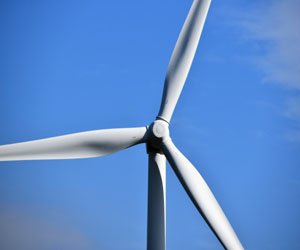
As the world grapples with the need to reduce its reliance on fossil fuels and combat the effects of climate change, the exploration and adoption of alternative energy sources have gained tremendous momentum. These innovative and sustainable energy solutions are playing a crucial role in shaping the future of energy production. In this article, we'll delve into some of the most promising alternative energy sources and their potential to transform our world.
Solar Power: Solar energy is one of the most widely recognized and accessible alternative energy sources. It harnesses the sun's energy through photovoltaic cells, converting sunlight into electricity. Solar panels are now a common sight on rooftops and in solar farms, offering a clean and renewable source of power. The technology has become increasingly affordable and efficient, making it a viable option for both residential and commercial use.
Wind Energy: Wind power has also gained significant traction in the alternative energy landscape. Wind turbines convert the kinetic energy of moving air into electricity. Wind farms, often situated in open, windy areas, have become a prominent feature of many countries' energy grids. The scalability of wind power makes it a flexible and promising energy source.
Hydropower: Hydropower, generated from the energy of flowing water, has been a tried and true source of renewable energy for many years. Large dams and smaller hydroelectric plants generate electricity by harnessing the kinetic energy of water. While these projects can have significant environmental impacts, innovations in small-scale, low-impact hydropower systems are being explored.
Geothermal Energy: Geothermal power taps into the Earth's internal heat. It involves drilling wells to access hot water or steam reservoirs below the Earth's surface and using this thermal energy to generate electricity. Geothermal energy is a reliable source of baseload power and is considered highly sustainable.
Biomass Energy: Biomass energy utilizes organic materials, such as wood, agricultural residues, and even algae, to produce biofuels and electricity. By burning or converting these materials into biofuels, it's possible to generate energy while recycling organic waste. Biomass energy can be carbon-neutral when managed sustainably.
Tidal And Wave Energy: Tidal and wave energy technologies capture the energy of ocean tides and waves, converting it into electricity. These sources are highly predictable, making them promising options for regions with access to strong tides or consistent wave patterns.
Nuclear Fusion: While not yet a practical reality for widespread energy production, nuclear fusion holds immense promise. Fusion replicates the process that powers the sun, combining hydrogen atoms to release a vast amount of energy with minimal radioactive waste. Researchers and scientists are working toward making nuclear fusion a viable and safe energy source.
The adoption of alternative energy sources is not just an environmental necessity; it's an economic opportunity and a means to increase energy security. Many countries are investing heavily in these technologies to reduce greenhouse gas emissions and transition toward a more sustainable energy future.
As we look to the future, a diverse mix of alternative energy sources will likely play a significant role in meeting the world's energy demands. This transition requires ongoing research, development, and investment, but the promise of a cleaner, more sustainable energy landscape is a powerful motivator for change. Alternative energy sources are not just the key to mitigating climate change; they're also the path to a more resilient, efficient, and environmentally responsible energy system.
Maximizing Space And Minimizing Clutter
 3. Under-Bed Storage
3. Under-Bed Storage
Utilize the space beneath your bed for storage. Under-bed drawers or storage containers are an excellent way to store items like shoes, clothing, or seasonal bedding. This not only frees up closet space but also keeps your belongings easily accessible.
4. Kitchen Cabinet Organizers
Maximize kitchen storage with cabinet organizers. Pull-out shelves, drawer dividers, and pull-down racks can help you make the most of your kitchen cabinets, keeping your cookware, utensils, and pantry items neatly organized and accessible.
5. Wall-Mounted Shelves
Wall-mounted shelves are a versatile and stylish solution for adding storage space to your home. They can be used in various rooms to display decor, hold books, or store everyday items. By taking advantage of vertical space, you can free up floor space and reduce clutter.
6. Over-Door Storage
Over-door storage solutions are perfect for optimizing small spaces. Hanging racks, hooks, and pockets can be attached to doors to store shoes, accessories, cleaning supplies, or pantry items. These solutions maximize space while keeping items within easy reach.
7. Floating Furniture
Floating furniture, like wall-mounted vanities, desks, and entertainment centers, can make a room feel more spacious by creating the illusion of more floor space. These pieces not only look sleek but also offer storage underneath.
8. Clear Containers And Labels
Clear storage containers are essential for efficient organization. They allow you to see the contents without having to open each container. Use labels to further categorize and identify your belongings, making it easy to find what you need.
Cultivating A Sustainable Green Space
 Benefits Of Eco-Friendly Gardening:
Benefits Of Eco-Friendly Gardening:
Reduced Environmental Impact: One of the primary advantages of eco-friendly gardening is its ability to reduce the negative impact on the environment. By avoiding harmful chemical pesticides and synthetic fertilizers, you help protect the soil, water, and air from pollution.
Biodiversity: Eco-friendly gardening practices encourage the presence of diverse plant and animal species in your garden. This not only adds to the beauty of your green space but also contributes to local biodiversity and ecosystem health.
Sustainability: Sustainable gardening prioritizes renewable resources and practices, ensuring the long-term health and productivity of your garden. Composting, mulching, and water conservation are key elements of this approach.
Healthier Garden: By avoiding harsh chemicals, your garden becomes a healthier place for plants, insects, and people. Organic gardening methods promote the use of natural predators to control pests, resulting in a balanced and thriving ecosystem.
Cost-Effective: Eco-friendly gardening can be cost-effective in the long run. While initial investments in organic soil amendments and composting may be slightly higher, the reduced need for chemical inputs and lower maintenance costs can offset these expenses over time.
Principles Of Eco-Friendly Gardening:
Natural Pest Control: Encourage beneficial insects like ladybugs and lacewings, and use natural remedies like neem oil to combat garden pests.
Organic Soil Enrichment: Improve soil health with compost and organic matter, reducing the need for synthetic fertilizers.
A Step Toward Sustainable Living
 Why Environmentally Mindful Cleaning Matters
Why Environmentally Mindful Cleaning Matters
Traditional cleaning products often contain harsh chemicals and synthetic fragrances that can have adverse effects on our health and the environment. These chemicals, when washed down the drain, find their way into waterways, harming aquatic life and affecting the quality of our drinking water. Moreover, indoor air pollution caused by the release of volatile organic compounds (VOCs) from cleaning products can lead to respiratory problems and other health issues.
Environmentally mindful cleaning is about recognizing the interconnectedness of our actions. It's not just about making our immediate surroundings cleaner; it's about preserving the planet for future generations. By making eco-conscious choices in our cleaning routines, we can significantly reduce our ecological footprint and contribute to a healthier world.
The Green Cleaning Revolution
The shift towards environmentally mindful cleaning practices has given rise to a green cleaning revolution. This movement encourages the use of natural, non-toxic, and sustainable alternatives to conventional cleaning products. Some of the key elements of this revolution include:
Natural Ingredients: Many common household items like vinegar, baking soda, lemon juice, and essential oils can serve as powerful cleaning agents. They are safe, effective, and readily available.
Reducing Plastic Waste: Eco-friendly cleaning often involves the use of refillable and reusable containers, reducing the need for single-use plastic bottles that can take hundreds of years to decompose.

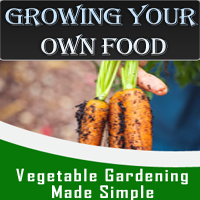
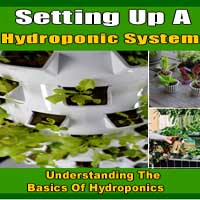

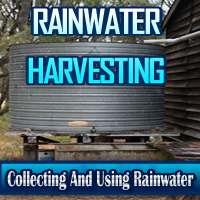

The Advantages Of Raised Beds
 Gardeners have control over the composition of the soil in raised beds. You can customize the soil mix to meet the specific needs of your plants. This flexibility is especially advantageous if your natural soil is of poor quality. Gardeners often use a blend of topsoil, compost, and organic matter to create a rich, fertile growing medium in their raised beds.
Gardeners have control over the composition of the soil in raised beds. You can customize the soil mix to meet the specific needs of your plants. This flexibility is especially advantageous if your natural soil is of poor quality. Gardeners often use a blend of topsoil, compost, and organic matter to create a rich, fertile growing medium in their raised beds.
Warmer Soil And Extended Growing Season
Raised beds are known for their ability to warm up earlier in the spring and stay warmer in the fall, effectively extending the growing season. The elevated structure allows the soil to absorb and retain heat more efficiently. This feature enables gardeners to start planting earlier and continue harvesting crops later into the year.
Ease Of Maintenance
Working in raised beds is generally more comfortable due to the raised height, which reduces the need for bending and kneeling. This is particularly beneficial for individuals with mobility issues or back problems. Additionally, the defined and structured layout of raised beds makes it easier to manage and maintain your garden.
Weed And Pest Control
Raised beds help in controlling weeds, as the defined garden space minimizes the area where weeds can grow. Gardeners can install weed barriers or mulch within the bed to further prevent weed growth.
Strategies And Implications
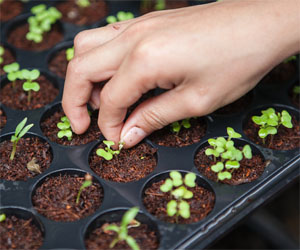 Higher yields in agriculture refer to the increased production of crops, livestock, or other agricultural products per unit of land, water, or other resources. This increase in productivity is essential for several reasons:
Higher yields in agriculture refer to the increased production of crops, livestock, or other agricultural products per unit of land, water, or other resources. This increase in productivity is essential for several reasons:
1. Food Security: With a global population that continues to expand, the need for increased food production is evident. Higher yields help ensure that there is enough food to feed everyone.
2. Economic Growth: Agriculture is a significant driver of economic growth in many countries. Higher yields can boost rural economies, create jobs, and increase income for farmers and agricultural businesses.
3. Environmental Sustainability: Efficient farming practices that result in higher yields can help reduce the environmental impact of agriculture. By producing more food with fewer resources, we can minimize habitat destruction, water usage, and greenhouse gas emissions.
Strategies For Achieving Higher Yields
Numerous strategies and technologies contribute to higher yields in agriculture:
1. Improved Crop Varieties: Developing and adopting high-yielding crop varieties through selective breeding and genetic modification is a primary strategy. These varieties are often more disease-resistant and better suited to specific environmental conditions.
2. Precision Agriculture: The use of technology, such as GPS, sensors, and data analysis, allows farmers to make precise decisions about planting, irrigation, and fertilization. This optimizes resource use and boosts yields.
3. Sustainable Practices: Techniques like crop rotation, reduced tillage, and cover cropping can improve soil health and enhance crop yields while minimizing environmental harm.
4. Efficient Water Management: Implementing water-saving irrigation methods like drip or sprinkler systems can help maintain optimal soil moisture and boost crop yields.
5. Pest And Disease Management: Effective pest and disease control measures, including integrated pest management, help protect crops and prevent yield losses.